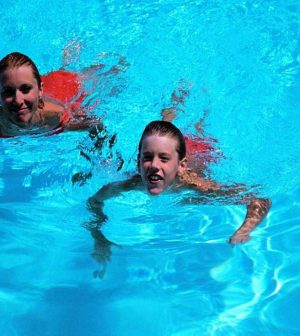- Understanding the Connection Between Anxiety and Depression
- How Daily Prunes Can Influence Cholesterol and Inflammation
- When to Take B12 for Better Absorption and Energy
- Epsom Salts: Health Benefits and Uses
- See What Saffron Can Do for Sleep and Heart Health
- 6 Common Mistakes to Avoid Before Your Physical
- Can Sweating Really Help You Beat a Cold?
- Strengthening Your Relationship: Practical Strategies
- Skip Storing This Everyday Product in the Fridge Door
- Green Tea + B3 Pairing May Boost Brain Health
Why Do So Many Kids Never Get Swimming Lessons?

Cost and lack of time are among the reasons parents don’t enroll their kids in swimming lessons, a new survey finds.
“Swimming is one of the most important life-saving skills that children and adults should master. Whether for fun or for exercise, swimming will serve them well for the rest of their lives, and it’s never too early to start learning,” said Dr. Matthew Davis, chair of medicine at the Ann & Robert H. Lurie Children’s Hospital of Chicago.
The recent poll of more than 1,500 Chicago parents found that 46% of their children never had swimming lessons.
The top three reasons were cost (35%), not enough time (22%) and unable to find lessons (21%). Other parents said they taught their kids to swim or didn’t send them to lessons due to the COVID-19 pandemic.
While 70% of white parents said their kids got lessons, the rates were 63% among Asian/other parents, and 45% among Black and Hispanic parents, the findings showed.
According to study co-author Dr. Michelle Macy, “Water safety skills are essential, especially for Black youth who drown at five times the rate of white youth.” Macy is an emergency medicine physician and scientific director of community, population health and outcomes at the hospital’s Stanley Manne Children’s Research Institute.
“Many people can’t wait to start swimming again, and we hope all parents will take action by pairing supervision with education so their children are safer in the water,” Macy said in a hospital news release.
The poll also found that only 38% of kids in families living below the federal poverty level ($26,500 for a family of four) were able to float on their backs for 30 seconds without help, compared to 51% from middle-income households and 64% from high-income households. Floating without help is a key survival skill that can reduce the risk of drowning.
The findings suggest that low household income is a barrier to child water safety, the study authors said.
More information
The American Red Cross has more on water safety for children.
SOURCE: Ann & Robert H. Lurie Children’s Hospital of Chicago, news release, June 15, 2021
Source: HealthDay
Copyright © 2026 HealthDay. All rights reserved.










